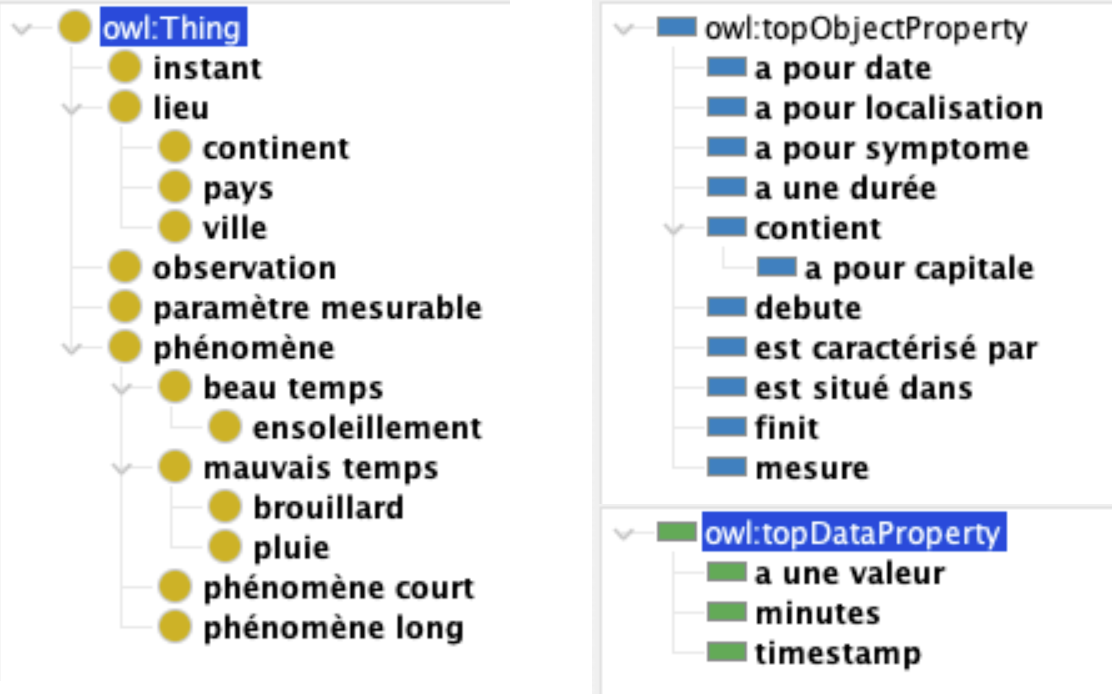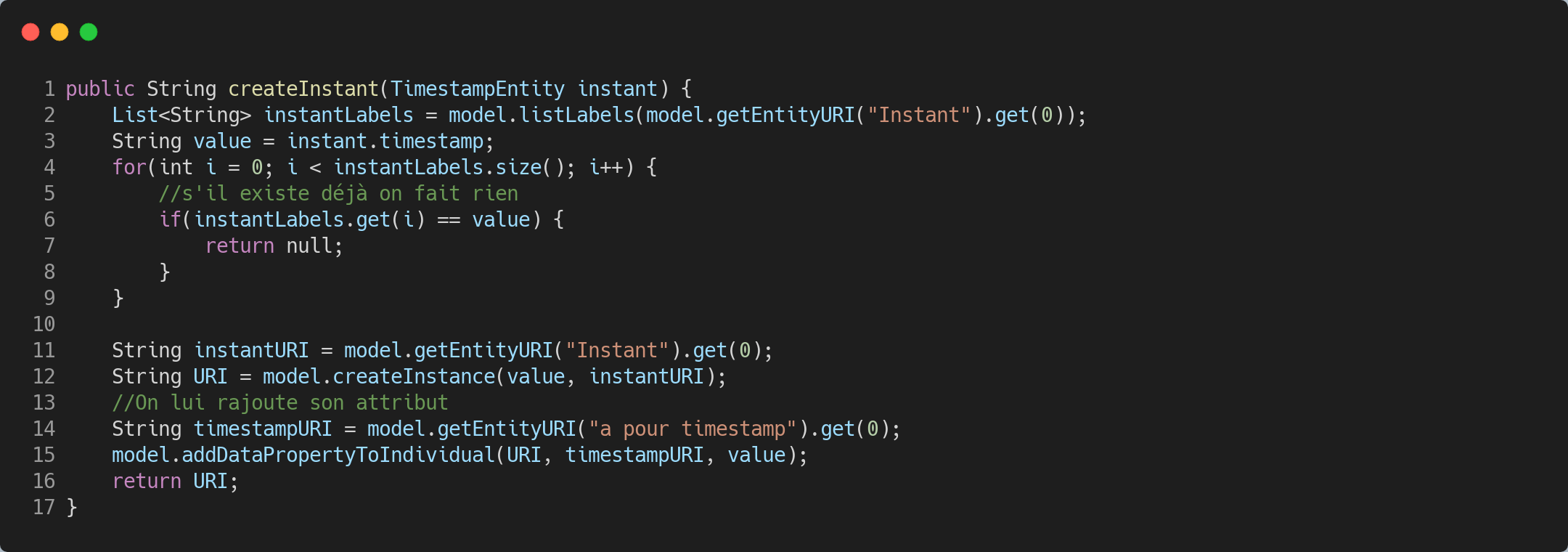Descriptive part
Ontology design
From these definitions we deduce the classes and subclasses in yellow, the object properties in blue and the data properties in green. The details of the practical work will exceptionally be in French to coincide with the Protege software.
Classes
- Le beau temps et le mauvais temps sont deux types de phénomènes
- La pluie et le brouillard sont des types de phénomènes de mauvais temps, l’ensoleillement est un type de phénomène de beau temps
- Les paramètres mesurables sont une classe de concept, ainsi que les instants et les observations. La classe concept n'est pas présente sur la capture, il s'agit d'un oubli et ne gène pas la suite du TP
- Une ville, un pays et un continent sont des types de lieux
Object & data properties
- Un phénomène est caractérisé par des paramètres mesurables
- Un phénomène a une durée en minutes
- Un phénomène débute à un instant
- Un phénomène finit à un instant
- Un instant a un timestamp, de type xsd :dateTimeStamp
- Un phénomène a pour symptôme une observation
- Une observation météo mesure un paramètre mesurable
- Une observation météo a une valeur pour laquelle vous ne représenterez pas l’unité
- Une observation météo a pour localisation un lieu.
- Une observation météo a pour date un instant
- Un lieu peut être inclus dans un autre lieu ▶ est situé dans
- Un lieu peut inclure un autre lieu ▶ contient
- Un pays a pour capitale une ville

The second step is to populate this ontology with several individuals following certain rules. The details will not be present here but you can find them in my report. "Protege" incorporates a tool called hermit reasoner that allows you to make inferences about individuals. For example, if we create Paris as an untyped individual and France as a country, we can then create the triplet France :a pour capitale Paris. The reasoner then deduces that Paris is a city. This is a very simple example that shows how it works. It uses the established rules to deduce additional information.
Exploiting the ontology
The goal of this second part is to use the previously created ontology and to implement to implement functions that will be used by this ontology. We then use the properties defined in part 1 to represent some individuals of the ontology.
The code:
main functions
At first, the objective is to implement the IModelFunctions interface using the functions present in IConvenienceInterface. So we have five functions to to implement. Each function corresponds to a jUnit test that we must validate.





